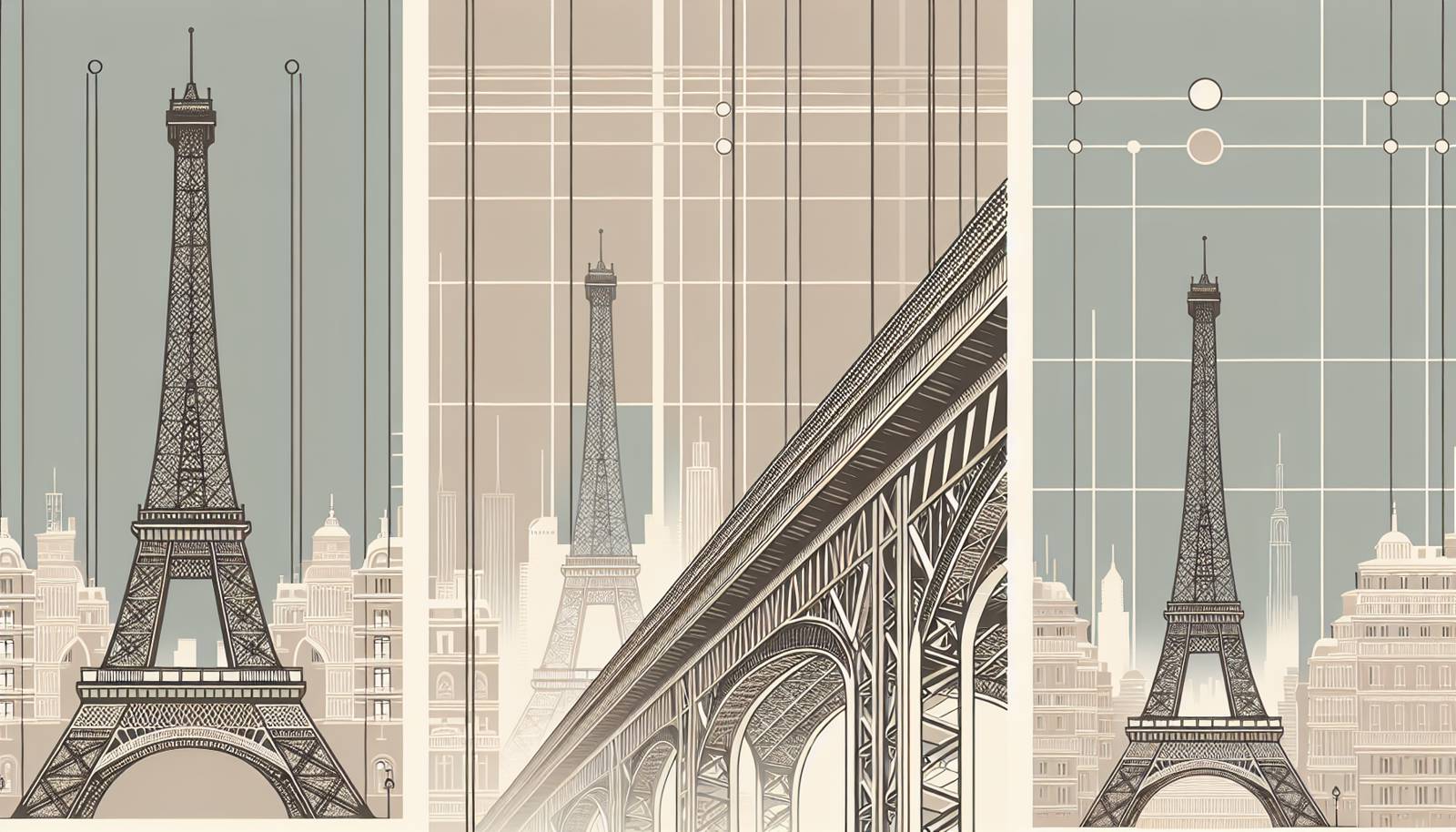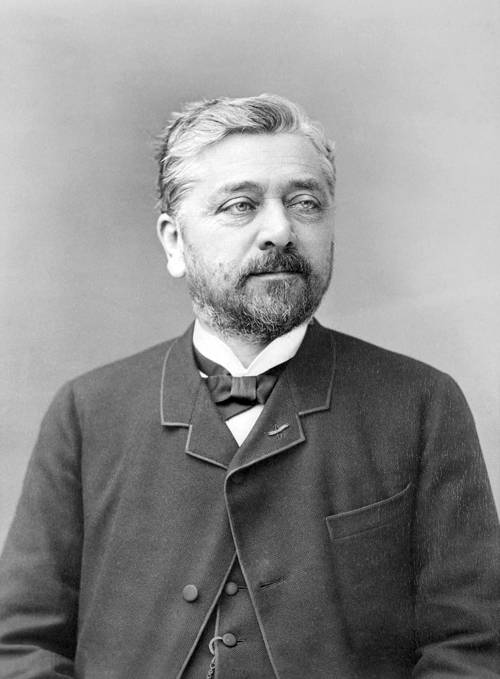
FAQ About Gustave Eiffel

Who was Gustave Eiffel?
Gustave Eiffel was a renowned French civil engineer and architect, born on December 15, 1832, in Dijon, France. He is best known for designing the Eiffel Tower, which was completed in 1889 for the World's Fair in Paris. Eiffel also contributed to the construction of the Statue of Liberty's iron framework and numerous other significant engineering projects around the world.

What are some notable projects designed by Gustave Eiffel?
Besides the Eiffel Tower, Gustave Eiffel was involved in several other major engineering projects. He designed the iron framework for the Statue of Liberty, collaborated on the construction of railway bridges like the Garabit Viaduct in France, and worked on the Nice Observatory's dome. His works contributed significantly to the advancements in using iron for large structures.

Why was the Eiffel Tower built?
The Eiffel Tower was built as the centerpiece for the 1889 Exposition Universelle (World's Fair) held in Paris, which celebrated the centennial of the French Revolution. Designed to showcase France's industrial prowess, it has since become one of the most iconic structures in the world.

How did Gustave Eiffel contribute to the Statue of Liberty?
Gustave Eiffel played a crucial role in the construction of the Statue of Liberty by designing its iron framework. His expertise in working with iron structures ensured the stability and strength of the statue, allowing it to withstand the elements and remain a symbol of freedom and democracy.

What was Gustave Eiffel's educational background?
Gustave Eiffel studied at the Collège Sainte-Barbe in Paris and later attended the École Centrale des Arts et Manufactures, where he graduated in 1855 with a degree in chemistry. Despite his educational background in chemistry, he pursued a career in civil engineering, where he developed a reputation for his innovative use of iron in construction.

What is the legacy of Gustave Eiffel in modern engineering?
Gustave Eiffel's legacy in modern engineering is profound. He demonstrated the potential of iron as a material for constructing large-scale structures, influencing future architectural and engineering projects. His work helped pioneer the use of metal structures, which became foundational in the design of skyscrapers and bridges worldwide.

How tall is the Eiffel Tower, and how long did it take to build?
The Eiffel Tower stands at approximately 324 meters (1,063 feet) tall, including its antennas. Construction began in January 1887 and was completed in March 1889, taking just over two years to finish. The tower consists of 18,038 metal parts joined by 2.5 million rivets.

Did Gustave Eiffel face any opposition during the construction of the Eiffel Tower?
Yes, Gustave Eiffel faced significant opposition during the construction of the Eiffel Tower. Many artists and intellectuals in Paris criticized the design, calling it an eyesore that would diminish the city's beauty. Despite this criticism, Eiffel persevered and the tower was completed and later appreciated as a marvel of modern engineering.

What was Gustave Eiffel's involvement with aerodynamics and meteorology?
Later in his career, Gustave Eiffel developed a keen interest in aerodynamics and meteorology. He built a wind tunnel on the Champ de Mars near the Eiffel Tower, where he conducted experiments that were pioneering in understanding the forces acting on structures and vehicles due to wind. His research contributed to the development of early aviation technology.

When did Gustave Eiffel die, and where is he buried?
Gustave Eiffel died on December 27, 1923, in Paris, France. He is buried in the Levallois-Perret Cemetery, which is located just outside of Paris. His contributions to engineering and architecture continue to be celebrated today.

How did Gustave Eiffel's work influence architecture outside of France?
Gustave Eiffel's work had a significant impact on architecture beyond France, particularly in the use of metal structures. His techniques and innovations influenced the construction of bridges, towers, and other large structures across Europe and the Americas. His designs demonstrated the durability and versatility of iron, paving the way for future architectural advancements.

Was Gustave Eiffel involved in any other industries outside of engineering?
Although primarily known for his engineering work, Gustave Eiffel was involved in other areas, such as environmental science. He conducted experiments in meteorology and aerodynamics, contributing valuable research in these fields. Additionally, Eiffel showed an interest in telecommunications and telegraphy, believing that his tower could be used for these purposes.

What innovations did Gustave Eiffel bring to bridge construction?
Gustave Eiffel was a pioneer in the use of wrought iron for bridge construction, which was crucial for building longer spans and more resilient structures. He developed new techniques for riveted metal trusses and introduced a modular approach to construction that allowed for quicker and more efficient assembly. His work on bridges like the Maria Pia Bridge in Portugal showcased these innovations.

How did Gustave Eiffel manage the construction projects he undertook?
Gustave Eiffel was known for his methodical and detail-oriented management style. He employed rigorous planning and innovative engineering techniques to oversee large projects effectively. His commitment to quality and efficiency ensured the successful completion of structures such as the Eiffel Tower, even when facing technical and logistical challenges.

What kind of steel did Gustave Eiffel use for the Eiffel Tower, and why?
The Eiffel Tower was constructed using puddle iron, a type of wrought iron with low carbon content, which was commonly used in the late 19th century because of its strength and flexibility. This material allowed for the fabrication of over 18,000 parts that were prefabricated and connected on site, ensuring the tower's remarkable stability and resilience.

What challenges did Gustave Eiffel face in creating the Eiffel Tower?
Gustave Eiffel encountered multiple challenges during the construction of the Eiffel Tower, including technical difficulties related to its unprecedented height and complexity. Additionally, he faced public opposition from those who thought the tower's design was unattractive. He addressed these issues through careful scientific study, innovative design, and effective communication.

What is the significance of the Eiffel Tower today?
Today, the Eiffel Tower is not only a symbol of Paris and France but also a masterpiece of 19th-century engineering and architecture. It attracts millions of visitors worldwide each year and is a cultural icon representing artistic and technical achievements. Its enduring design continues to inspire engineers and architects globally.

Did Gustave Eiffel work on any rail systems or vehicles?
While Gustave Eiffel was primarily known for static structures, he was indirectly involved in the development of rail systems through his work on railway bridges, which were essential to expanding rail networks. He did not, however, design vehicles themselves, focusing instead on infrastructure projects that supported transportation advancements.

How did Gustave Eiffel's contributions impact modern architecture?
Gustave Eiffel's contributions laid the groundwork for the modern use of metal in architecture, influencing the design of skyscrapers, bridges, and other large structures. His innovative techniques demonstrated the versatility and strength of iron and steel, which have become foundational materials in contemporary architecture and construction.

Was the Eiffel Tower intended to be a permanent structure?
The Eiffel Tower was initially intended to be a temporary structure for the 1889 World's Fair and scheduled for dismantling in 1909. However, its usefulness as a radio transmission tower and its growing popularity saved it from demolition. It thus became a permanent and beloved landmark of Paris.
